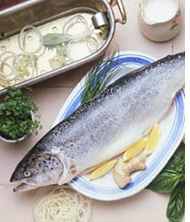Normally, during the food intake process in the human gut, low amounts of biogenic amines are metabolized to less active degradation products. This detoxification system includes specific enzymes (e.g. diamine oxidase DAO). However, upon intake of high loads of biogenic amines with foods, this detoxification system is unable to eliminate biogenic amines sufficiently. Moreover, in case of insufficient DAO-activity, caused by e. g. genetic predisposition, gastrointestinal diseases, or inhibition of DAO-activity due to secondary effects of medicines or alcohol, already low amounts of biogenic amines cannot be metabolized efficiently. Biogenic amines are readily absorbed and get into circulation, leading to toxic effects. Besides DAO, monoamine oxidases (MAO) distributed in different tissues of the human body also participate in the physiological inactivation of biogenic amines. Certain drugs (MAO-inhibitors) are decrease the activity of MAO, leading to an increased risk after intake of food contaminated with biogenic amines.
Biogenic amines such as histamine, in high concentrations are risk factors for food intoxication, whereas moderate levels may lead to food intolerance. The toxicity of histamine appeared to be enhanced by the presence of other amines such as cadaverine, putrescine, and tyramine. Several outbreaks of histamine poisoning have occurred after eating cheese or fish Sensitive persons, with insufficient diamine oxidase activity, suffer from numerous undesirable reactions after intake of histamine containing foods. Furthermore, secondary amines such as putrescine and cadaverine can react with nitrite to form heterocyclic carcinogen nitrosamines; nitrosopyrrolidine and nitrosopiperidine, respectively. Therefore, biogenic amines are concerned in relation to food spoilage, food safety, and food intolerance, and their content in foods should be as low as possible. The most frequent foodborne intoxications and intolerances, caused by biogenic amines, involve histamine.

Histamine exerts its toxicity by interacting with the receptors on cellular membranes. There are three types of histamine receptors, H1, H2 and H3. The most common symptoms result from action on the cardiovascular system. Histamine causes dilatation of peripheral blood vessels, causing urticaria, hypotension, flushing and headache. Histamine-induced contraction of intestinal smooth muscle causes abdominal cramps, diarrhea and vomiting. Pain and itching associated with the urticarial lesions may be due to sensory and motor neuron stimulation.


